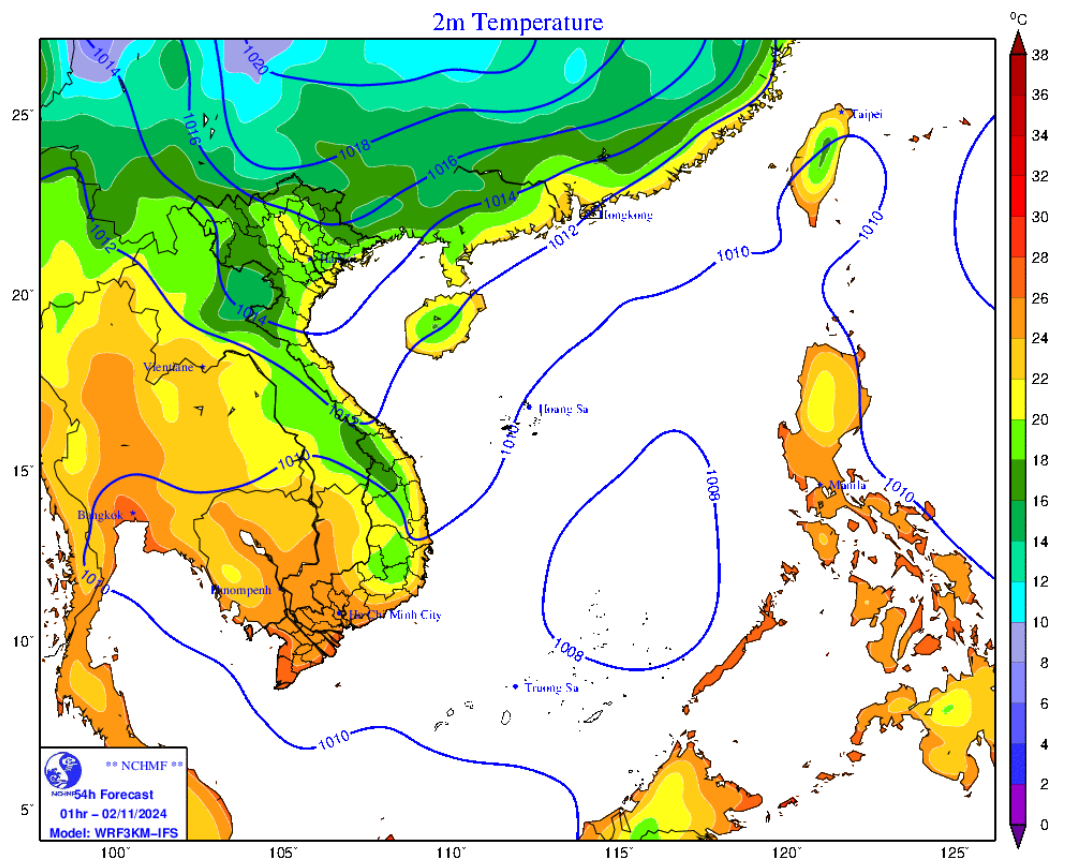
According to the National Center for Hydro-Meteorological Forecasting (NCHMF), a cold air mass from the north is currently moving southward.
By the late afternoon and evening of November 1, this cold front will impact the northeastern region of Northern Vietnam, followed by the north-central region and parts of the northwestern and central-central regions. Inland areas will experience northeast winds of level 2-3, with coastal areas experiencing winds of level 3-4.
Meteorologists report that weather changes in Northern Vietnam will be minimal. Starting November 1, nights and early mornings will be chilly, with mountainous areas experiencing colder nighttime temperatures.
The lowest temperatures in Northern Vietnam will generally range from 18-21 degrees Celsius, 15-18 degrees in mountainous areas, and below 15 degrees in high mountain regions. Thanh Hoa and Nghe An will see lows of 20-23 degrees.
Also starting November 1, northeast winds in the Gulf of Tonkin will strengthen to level 6, with gusts reaching levels 7-8; seas will become rough, with waves between 1.5-2.5 meters high.0
In the northern part of the East Sea, northeast winds will strengthen to level 6, with gusts reaching levels 7-8 on November 2, creating waves 2-3.5 meters high.
The strong winds and high waves are expected to affect maritime operations and other activities at sea.
In addition, the NCHMF forecasts that from November 4-9, Northern Vietnam will experience scattered showers and thunderstorms, with cold weather beginning on November 5.
The Southern Regional Hydro-Meteorological Station reports that on November 1, cold air will intensify over northern Vietnam, with weak surges continuing in the following days and a stronger surge expected around November 4-5, moving gradually southward.
Previously, Hoang Phuc Lam, Deputy Director of the National Center for Hydro-Meteorological Forecasting, noted that this winter will likely see more severe and widespread cold spells in December 2024 and January 2025, especially in late December, consistent with historical averages.
Bao Anh